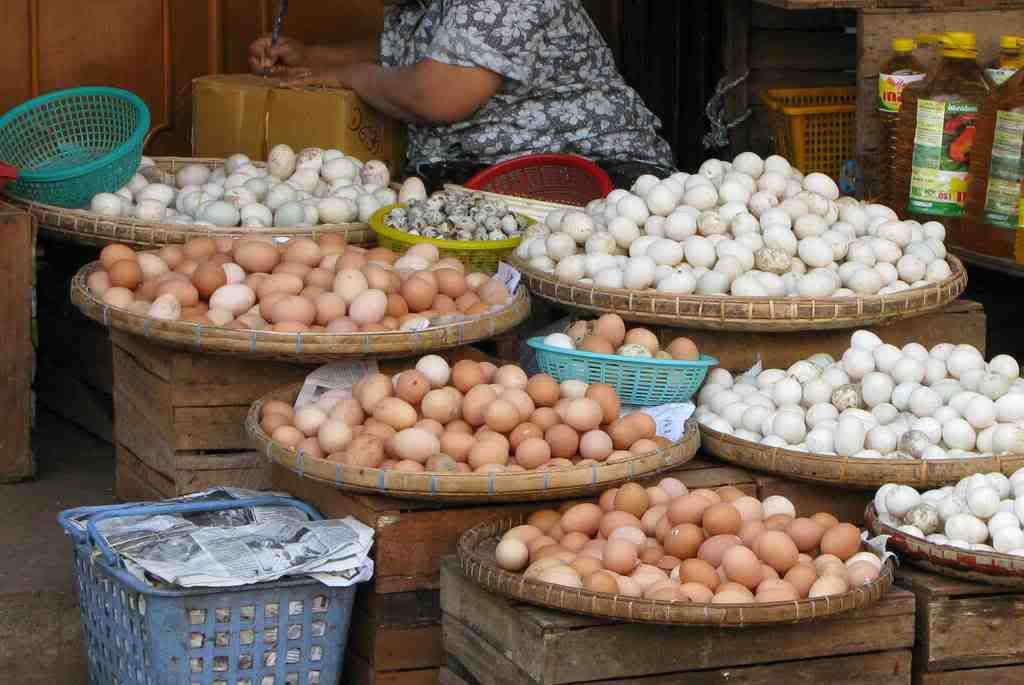 March 25, 2009
March 25, 2009We were reminded the other day that apparently clean, intact shell eggs sometimes may contain Salmonella. The reminder came in the form of a recall of organic eggs from den Dulk Poultry Farms.
The eggs were shipped to Costco, Safeway and Pack n' Save stores in western Nevada and northern California. The California Department of Health Services has issued its own warning and has promised to post a list of retail locations where the eggs were available as soon as that information is released to them.
While shell eggs are only occasionally contaminated with Salmonella – USDA estimates one contaminated egg in 20,000 – raw or undercooked eggs have been linked to several outbreaks of Salmonella food poisoning, both in the United States and elsewhere.
Restaurant and food service patrons should be especially aware of the risk of consuming undercooked or "runny" eggs. Several outbreaks have been traced to the practice of cracking and pooling eggs in the evening in preparation for the next day's breakfast rush. This practice can allow a single contaminated egg to taint the entire pool.
Even though the pooled eggs are refrigerated, the egg mix may not be cooled to a temperature that would prevent Salmonella from multiplying. And restaurants that offer scrambled eggs in a breakfast buffet sometimes choose to undercook the eggs so that they do not dry out in the buffet display. As a result, eggs offered in a breakfast buffet present a special risk of spreading Salmonella.
In 1985, 91 attendees at a convention held in Santa Fe, New Mexico were infected with Salmonella after consuming runny eggs from a breakfast buffet offered during the convention. Egg storage, handling and cooking practices also have been blamed for Salmonella outbreaks in the United Kingdom, Japan, Australia, and elsewhere.
Nor are undercooked scrambled eggs the only problem. Salmonella outbreaks have been linked to raw or undercooked eggs used in homemade bread dumpling loaf in Austria, rice arancini in Italy, tiramisu in the UK, cheesecake in California, hollandaise sauce in a hotel restaurant in Washington, DC, homemade ice cream in Florida, and Caesar salad dressing in a US restaurant.
Which came first - the chicken or the egg?
As far as Salmonella is concerned, the answer is clear. Salmonella-infected laying hens produce Salmonella-contaminated eggs, either during the development of the egg inside the hens or as a result of environmental contamination of the shell after laying. And one source of contamination is the feed.
Finland, which has undertaken great efforts over the years to minimize Salmonella in its poultry flocks, has been struggling recently with Salmonella-contaminated feed from a single producer. As of Monday, Salmonella had been detected at 23 Finnish egg-producing poultry farms and six pig farms, all of which received the contaminated feed.
Finnish policy requires that a Salmonella-infected poultry flock be destroyed and the poultry farm completely sanitized before a new flock is introduced. Understandably, poultry farmers who received the Salmonella-contaminated feed are waiting nervously for the results of lab tests that will decided the fate of their flocks.
The policy in Finland – indeed, in all of Scandinavia and in many other EU countries – may seem draconian to poultry and egg farmers in other countries. But it has made major inroads in controlling the presence of Salmonella in eggs and poultry meat in those countries. The incidence of Salmonella in Finnish cattle, swine, poultry and eggs is less than 1%. A survey of nearly 700 chilled chicken carcasses in Swedish slaughterhouses did not detect a single Salmonella-contaminated carcass.
In September 2004, FDA issued a Proposed Rule for the "Prevention of Salmonella Enteritidis in Shell Eggs During Production." The extended comment period for the proposed rule expired in June 2005. This Proposed Rule, which had the stated purpose of reducing the frequency of Salmonella contamination in eggs, was never issued as a Final Rule (i.e., never implemented) – either in its original form or with amendments.
Until the United States – along with other countries outside the EU – chooses to address this problem, consuming raw or undercooked eggs will remain a risky business.





No comments:
Post a Comment
Note: Only a member of this blog may post a comment.